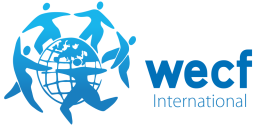Developing a water & sanitation safety plan in a rural community
3rd Edition
This compendium aims to enable communities to develop a WSSP for small-scale water supplies, e.g. dug wells, boreholes, springs and piped centralised water supply systems, and as well as to assess the quality of sanitation facilities such as school toilets.
The World Health Organisation (WHO) initiated Water Safety Plans (WSP),
which are considered being part of the WHO drinking water guidelines and EU directives on water intended for human consumption. The WSP addresses the identification of risks, which could affect water safety and human health in every stage of the water supply. The approach of implementing WSP for water supplies serving small communities has been expanded by integrating the sanitation system to a Water and Sanitation Safety Plan (WSSP), as sanitation is another important pillar of public health and closely linked to water. This module introduces the most
important steps and basic elements for developing a community based WSSP.
Part A
The first part introduces the most important steps and basic elements for developing a community based WSSP.
Part B
The second part “Background information for developing a WSSP” provides information on various specialist areas. Topics related to drinking water supply, treatment and distribution, sanitation or wastewater management are described in detail.
Part C
The third part, “How to involve schools,” provides guidance on how to teach school children e.g. about the sensitive area of hygiene. Menstrual health, in particular, is a taboo subject in their lives, and this module is designed to help teachers address this important and sensitive topic.
Languages
We provide the WSSP Compendium in English (3rd edition), Albanian, Bulgarian, Macedonian, Romanian and Serbian (2nd edition).
Part A: How to accomplish a water and sanitation safety plan?
Consists of 8 modules, explaining the approach of developing water and sanitation safety plans (WSSP) for small-scale water supplies, and provides basic and practical guidance for developing a WSSP. Two modules focus mainly on WSSP for non-piped water supplies and on small-scale piped distribution systems. Furthermore this part introduces the practical activities in 10 steps to be carried out by a WSSP team and leading to a local WSSP. Several forms for the practical activities, doing risk assessments of the water supply or toilets, doing interviews of different stakeholders and processing the collected information and results as well as examples are provided. The main target groups of part A are local authorities and water operators, but also teachers and NGOs.
Part B: Background information for developing WSSP
Consists of 9 modules, providing technical and regulatory information on for example possible drinking water sources, water treatment and distribution, sanitation and wastewater treatment, water protection and water quality, management of storm water and water related regulations. The main target groups of part B are persons who appreciate more background information on water and sanitation related issues. These can be local authorities and water operators, but also teachers, NGOs and interested citizens.
Part C: How to involve schools?
Consists of 7 modules, and is an additional part, especially for youth and schools. It includes theoretical lessons on general water issues such as the water cycle, and also specific information on school sanitation, water and personal hygiene, including menstrual hygiene management for girls. The development of a WSSP is explained especially in terms of involving pupils and citizens. Exercises and suggestions for practical and interactive actions in combination with the tool box are detailed. Part C targets mainly teachers, but also youth group leaders, NGOs or local authorities.
Special chapter: How to reduce and prevent the spread of infectious diseases in schools
The new chapter contains information for students, school principals and education staff as well as for parents or guardians with practical advice on how to reduce and prevent the spread of infectious diseases in schools.
Download






